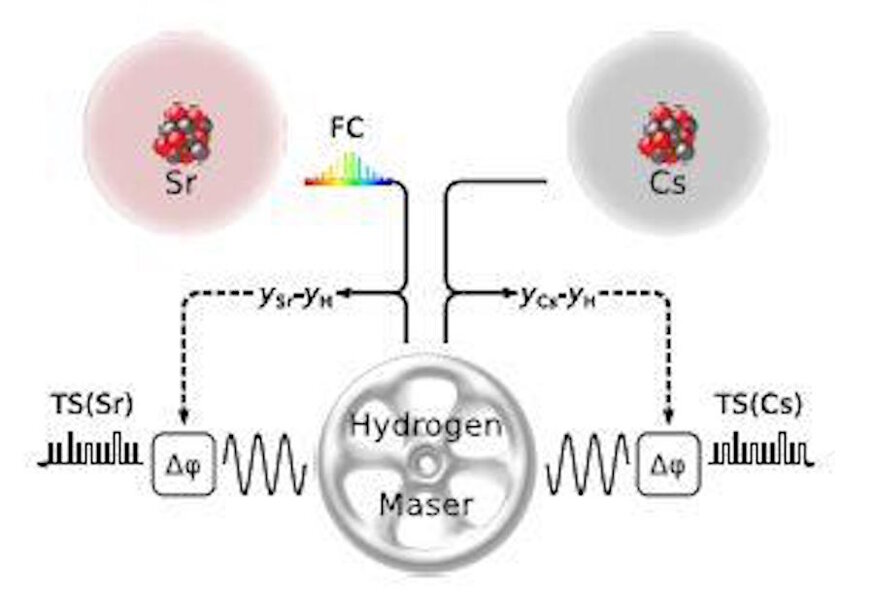Is it time to redefine the second?
Loading...
How long does a second last? It may sound like a thought experiment, but it's a real question scientists are asking – and answering.
Scientists puzzling over the nature of a second, found the time to discover a previously impractical method that could offer more accurate timekeeping on a global scale, according to new research published in the scientific journal Optica. The newly improved tech – optical clocks – could soon replace the more traditional version of the atomic clock, despite some downsides.
And while the average wristwatch won't be getting an upgrade, improvements in timekeeping could have tangible benefits on technologies from GPS navigation to stock trading.
"Our study is a milestone in terms of practical implementation of optical clocks," said researcher Christian Grebing of The National Metrology Institute of Germany, in a press release.
Despite countless devices keeping the time, the gold standard for timekeeping isn't a smartphone, sundial, pendulum, or large clock hanging on an office wall – it's atomic.
Essentially, keeping time requires measuring the intervals of a repeating action. The hardest part is finding a repeating action that is reliably consistent to a millionth of a second.
Columbia University physicist Isidor Rabi solved that problem for a generation when he discovered a way to use atoms as the source of a reliable action in the 1930s.
By hitting an atom with microwave radiation, the electrons in the atom are excited and "jump" to another energy state. By measuring those jumps, scientists can turn an excited atom into an extremely precise metronome and thus a tool for keeping reliable time, explains Christian Lisdat, the senior author on the paper, in a phone interview with The Christian Science Monitor.
But atomic clocks aren't quite perfect. Each month, most atomic clocks accumulate an error of roughly one nanosecond, which compounds over years.
Despite the stray nanoseconds, atomic clocks have set the standard for the past century.
"Most countries have atomic clocks that provide the timescale for that country," says Dr. Lisdat. "All of these clocks are inter-compared regularly, typically on a monthly basis … to calculate a global timescale."
Even the official definition of a second was updated in 1967 by the International System of Units (SI) to reflect the accuracy of the technology: "The second is the duration of 9,192,631,770 periods of the radiation corresponding to the transition between the two hyperfine levels of the ground state of the cesium 133 atom."
But scientists campaigning for optical clocks says that definition just isn't good enough.
Optical clocks are still atomic clocks, but instead of hitting an atom with microwave radiation, scientists use the radiation produced by a number of lasers to excite the atom. The result is something akin to turning up the tempo on a metronome, by more than a thousand times.
The lasers oscillate about 100,000 times faster than the average microwave radiation-based atomic clock. The increased frequency means more accurate time keeping – the study showed an error accumulation of just .20 nanoseconds over the 25 day test.
Optical clocks also produce reliable results much faster. On a traditional atomic clock, the times are added together and reliable timekeeping emerges after roughly 24 hours. With an optical clock, scientists are able to produce results after a few seconds.
Of course, working with lasers can be tricky. In the past, downtime caused by mechanical failure and tinkering made optical clocks impractical.
Scientists in this study covered the downtime by also running an microwave-based atomic clock. When the optical clock was working, the scientists compared the time of the microwave-based atomic clock and corrected any errors they found.
"There really are a large number of potential applications this could benefit," says Andrew Ludlow, a physicist at the National Institute of Standards and Technology who was not involved in this research, in an interview with the Monitor. "Things like navigation and communication systems – at the heart of those systems are often very high performing atomic clocks and use the accurate measurement of time as a workhorse technology."
Scientific research that requires precise timekeeping will likely get the biggest boost, agrees Lisdat.
But will the definition of a second get an upgrade?
"I'm convinced that this will happen sometime, but not very soon," Lisdat tells the Monitor. "People are thinking about a roadmap toward redefinition.… I would guess more like 10 years."






